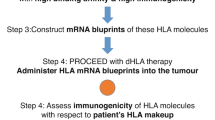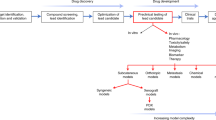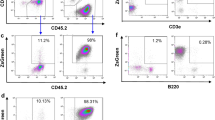Abstract
TISSUE culture lines of human tumours can be transplanted into animal hosts conditioned with immunological depressants such as cortisone or irradiation1. Several reports2,3 describe the immunosuppressive action of antilymphocyte serum; mice treated with antilymphocyte serum have a reduced capacity to reject skin homografts. Antilymphocyte serum seems to be the most effective immunosuppressant yet discovered, and because of its specificity and low toxicity it may provide an improved alternative to methods of host conditioning at present used in tumour transplantation. We have been able to grow two human tumour cell lines in mice treated with antilymphocyte serum.
This is a preview of subscription content, access via your institution
Access options
Subscribe to this journal
Receive 51 print issues and online access
$199.00 per year
only $3.90 per issue
Buy this article
- Purchase on Springer Link
- Instant access to full article PDF
Prices may be subject to local taxes which are calculated during checkout
Similar content being viewed by others
References
Toolan, H., Cancer Res., 14, 660 (1954).
Levey, R. H., Medawar, P. B., Proc. US Nat. Acad. Sci., 56, 1130 (1966).
Gray, J. G., Monaco, A. P., and Russell, P. S., Surg. Forum, 15, 142 (1964).
Author information
Authors and Affiliations
Rights and permissions
About this article
Cite this article
PHILLIPS, B., GAZET, JC. Growth of Two Human Tumour Cell Lines in Mice treated with Antilymphocyte Serum. Nature 215, 548–549 (1967). https://doi.org/10.1038/215548a0
Received:
Published:
Issue Date:
DOI: https://doi.org/10.1038/215548a0
This article is cited by
Comments
By submitting a comment you agree to abide by our Terms and Community Guidelines. If you find something abusive or that does not comply with our terms or guidelines please flag it as inappropriate.



